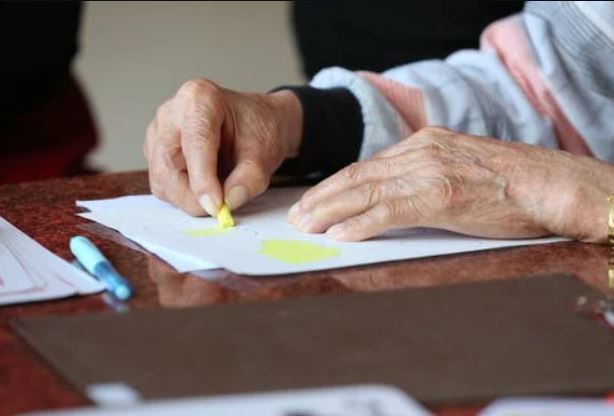Overview
Psoriatic arthritis is a joint problem (arthritis) that often occurs with a skin condition called psoriasis
Cause
Psoriasis is a common skin problem that causes red patches on the skin. It is an ongoing (chronic) inflammatory condition. Psoriatic arthritis occurs in about 7% to 42% of people with psoriasis. Nail psoriasis is linked to psoriatic arthritis.
In most cases, psoriasis comes before arthritis. In a few people, arthritis comes before skin disease. However, having severe, wide-spread psoriasis appears to increase the chance of getting psoriatic arthritis.
The cause of psoriatic arthritis is not known. Genes, immune systems, and environmental factors may play a role. It is likely that the skin and joint diseases may have similar causes. However, they may not occur together.
Symptoms
Arthritis may be mild and involve only a few joints. The joints at the end of the fingers or toes may be more affected. Psoriatic arthritis is most often uneven causing arthritis only on one side of the body.
In some people, the disease may be severe and affect many joints, including the spine. Symptoms in the spine include stiffness and pain. They most often occur in the lower spine and sacrum.
Some people with psoriatic arthritis may have inflammation of the eyes.
Most of the time, people with psoriatic arthritis have skin and nail changes of psoriasis. Often, the skin gets worse at the same time as arthritis.
Tendons may become inflamed with psoriatic arthritis. Examples include the Achilles tendon, the plantar fascia, and the tendon sheath in the hand.
Treatment
Your provider may give nonsteroidal anti-inflammatory drugs (NSAIDs) to reduce pain and swelling of the joints.
Arthritis that does not improve with NSAIDs will need to be treated with medicines called disease-modifying antirheumatic drugs (DMARDs). These include:
Apremilast is another medicine used for the treatment of psoriatic arthritis.
New biologic medicines are effective for progressive psoriatic arthritis that is not controlled with DMARDs. These medicines block a protein called tumor necrosis factor (TNF). They are often helpful for both the skin disease and the joint disease of psoriatic arthritis. These medicines are given by injection.
Other new biologic medicines are available to treat psoriatic arthritis that is progressing even with the use of DMARDs or anti-TNF agents. These medicines are also given by injection.
Very painful joints may be treated with steroid injections. These are used when only one or a few joints are involved. Most experts do not recommend oral corticosteroids for psoriatic arthritis. Their use may worsen psoriasis and interfere with the effect of other drugs.
In rare cases, surgery may be needed to repair or replace damaged joints.
People with inflammation of the eye should see an ophthalmologist.
Your provider may suggest a mix of rest and exercise. Physical therapy may help increase joint movement. You may also use heat and cold therapy.
Exams and Tests
During a physical exam, the health care provider will look for:
• Joint swelling
• Skin patches (psoriasis) and pitting in the nails
• Tenderness
• Inflammation in the eyes
Joint x-rays may be done.
There are no specific blood tests for psoriatic arthritis or for psoriasis. Tests to rule out other types of arthritis may be done:
• Rheumatoid factor
• Anti-CCP antibodies
The provider may test for a gene called HLA-B27 People with the involvement of the back are more likely to have HLA-B27.
Source
Courtesy of MedlinePlus from the National Library of Medicine



